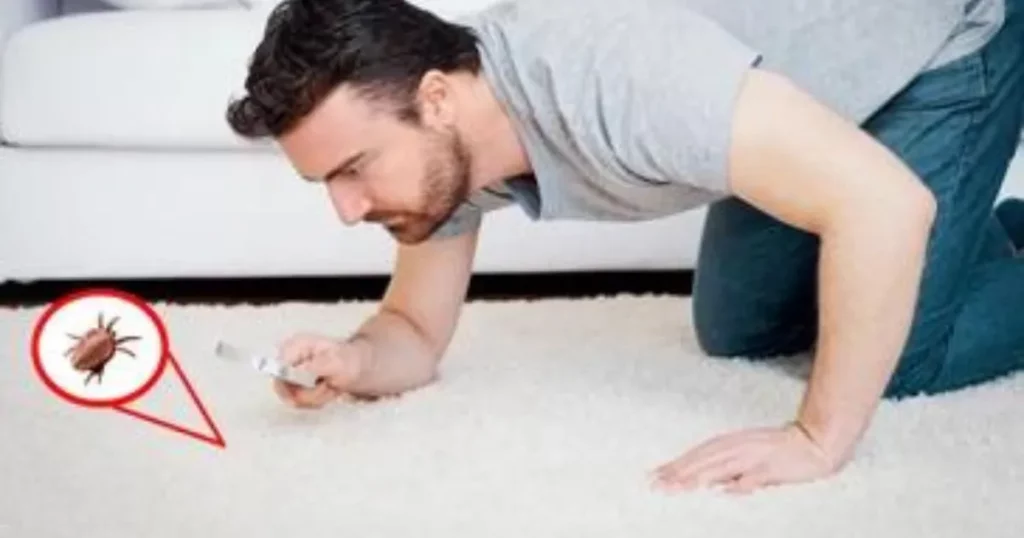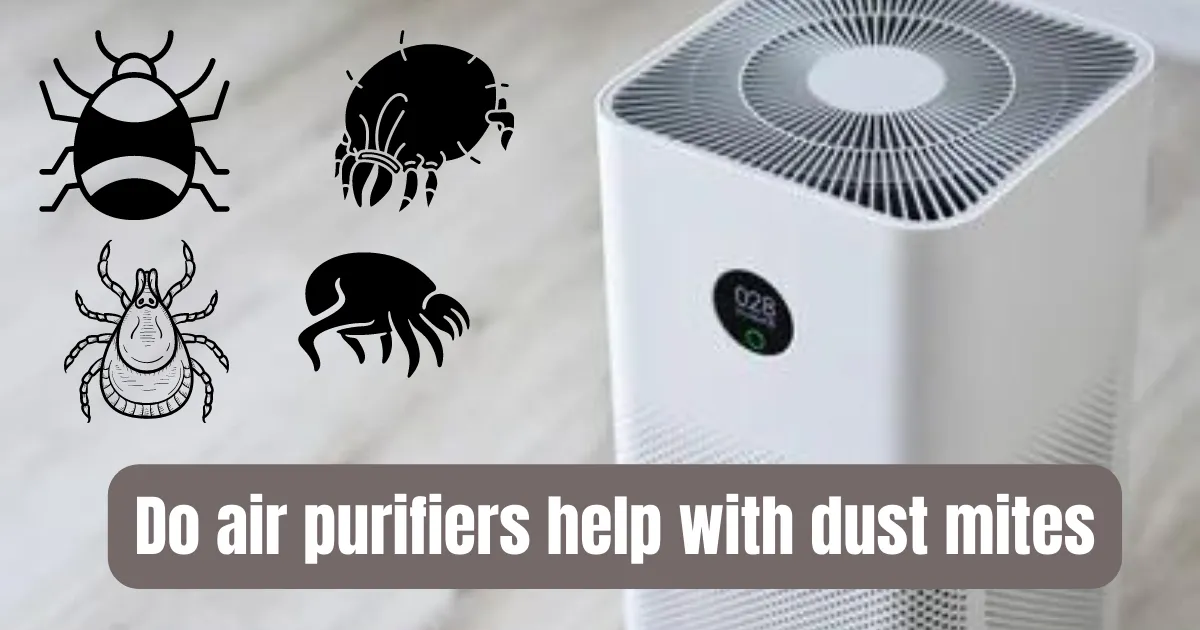We will explore the topic, “Do air purifiers help with dust mites?” in this post. Are you continuously struggling with dust mites and thinking if air purifiers can provide comfort? if so, you’re in the right place.
Dirt mites are tiny creatures that thrive in our houses and can reason allergies and breathing problems. the best factor is that air purifiers were proven to be a reliable approach for reducing dust mite allergies.
Read on to find out how air purifiers can significantly enhance the environment in your home if you’re in search of a quick and powerful way to deal with dust mites.
Contents
- 1 Do Air Purifiers Help with Dust Mites?
- 2 Dust mites allergy symptoms
- 3 Are They Bad For Your Health?
- 4 How to know if you have dust mites
- 5 Where do dust mites come from
- 6 How to get rid of dust mites naturally
- 7 Effectiveness of Air Purifiers against Dust Mites
- 8 Choosing the Right Air Purifier for Dust Mites
- 9 How Will You Know If Air Purifiers Are Helping With Dust Mites?
- 10 Additional Tips for Dust Mite Control
- 11 Conclusion
- 12 FAQs
- 12.1 1. Can air purifiers completely eliminate dust mites?
- 12.2 2. How often should I run my air purifier to control dust mites?
- 12.3 3. Can air purifiers help with other allergens besides dust mites?
- 12.4 4. Is a dehumidifier or air purifier better for dust mites?
- 12.5 5. How do I keep dust mites out of my room?
Do Air Purifiers Help with Dust Mites?
By reducing the quantity of dust mite allergens in the air, air purifiers can actually assist with dust mites. dust mites are microscopic creatures that stay in our houses and feed on dead pores and skin cells. While they themselves are not harmful, their waste particles and body fragments can trigger allergic reactions in some individuals.
Air purifiers are devices designed to improve indoor air quality by capturing and removing airborne particles, including dust mite allergens. They work by drawing in air and passing it through filters that can trap these particles. The most effective kind of filter for capturing small particles like dust mite allergens is a high-efficiency Particulate Air (HEPA) filter.
when air passes through a HEPA filter, it can capture particles as small as 0.3 microns with a high efficiency of 99.97%. This includes dust mite waste particles and body fragments that may be present in the air. A good way to reduce the quantity of dust mite allergens in the air you breathe is to keep an air purifier with a HEPA filter running all the time.
It’s crucial to remember that dust mites can still live and reproduce on surfaces like mattresses and carpets, thus air purifiers are unable to completely eliminate them.
To effectively control dust mites, a combination of measures is necessary. Along with using air purifiers, it is recommended to encase mattresses and pillows with allergen-proof covers, wash bedding regularly in hot water, vacuum carpets, and upholstered furniture frequently, and reduce humidity levels in the home.
You can lessen the possibility of allergic reactions caused by dust mite allergens by taking these steps and utilizing an air purifier together to produce a less suitable environment for dust mites. For optimum performance, it’s crucial to pick an air purifier that has the right filter and size for your room and to follow the manufacturer’s maintenance and filter replacement recommendations.
Dust mites allergy symptoms

Allergic reactions to dust mites can vary from mild to severe. Common symptoms include:
- Sneezing
- Runny or stuffy nose
- Itchy or watery eyes
- Coughing
- Wheezing or difficulty breathing
- Itchy skin or rash
- Postnasal drip
If you frequently suffer these symptoms, particularly in environments where dust mites are a problem, you should seriously think about reducing your exposure.
Are They Bad For Your Health?

Dust mites themselves do not bite or transmit diseases to people. but, their waste products include allergenic proteins that could cause allergic reactions in sensitive people. people with asthma and different breathing disorders may experience worsening signs and symptoms if they are exposed to dust mites and allergens over a prolonged time period.
How to know if you have dust mites

There are a few indications to watch out for if you think your home has a dust mite issue:
- Allergic symptoms: Consistent allergy reactions, especially when you awaken or spend time in particular areas of your home, maybe a sign that there are dust mites there.
- Visible signs: Dust mites themselves are too small to see, but you might notice tiny specks of dust on surfaces or bedding.
- Dust mite test kits: The presence of dust mites and associated allergens in your house can be determined using test kits that are accessible.
Where do dust mites come from

Dust mites are found worldwide and can thrive in various environments. They prefer warm and humid conditions, making bedding, carpets, and upholstered furniture ideal habitats. Dust mites feed on the dead skin cells shed by humans and pets, which are abundant in these areas.
How to get rid of dust mites naturally
You might consider the following natural solutions to lessen exposure to dust mite allergens and reduce dust mite populations:
- Wash bedding regularly: To get rid of dust mites and allergens from your sheets, pillowcases, and blankets, use hot water (130°F/54°C or higher).
- Vacuum frequently: Use a vacuum cleaner with a HEPA filter to effectively remove dust mites and their allergens from carpets, upholstery, and other surfaces.
- Encase your bedding: Use allergen-proof covers for mattresses, pillows, and duvets to create a barrier between you and the dust mites.
- Reduce humidity: Use a dehumidifier or an air conditioner to keep humidity levels below 50% because dust mites prefer humid environments.
- Remove clutter: Minimize dust accumulation by decluttering your home and regularly dusting surfaces.
Effectiveness of Air Purifiers against Dust Mites
Air purifiers can be effective in reducing dust mite allergens in your home. Look for air purifiers with HEPA filters, as these filters can capture particles as small as 0.3 microns, which includes dust mite allergens. You may enhance indoor air quality and reduce dust mite allergen exposure in your house by keeping an air purifier running all the time.
Choosing the Right Air Purifier for Dust Mites
The following elements should be taken into account when choosing an air purifier to prevent dust mites:
- HEPA filter: To effectively capture small dust mite allergens, make sure the air purifier includes a HEPA filter.
- Coverage area: Check the recommended coverage area of the air purifier to ensure it can effectively clean the air in your room or home.
- Noise level: If you intend to use the air purifier in bedrooms or other calm areas, pay attention to the air purifier’s noise level.
- Additional features: Some air purifiers offer additional features like activated carbon filters, UV sterilization, or ionizers. While these features may have their benefits, they are not necessarily specifically for dust mite control.
How Will You Know If Air Purifiers Are Helping With Dust Mites?
To determine “Do Air Purifiers Help with Dust Mites?” To effectively reduce dust mite allergens in your home, monitor your symptoms over time. If you notice a decrease in allergic reactions, such as reduced sneezing or improved breathing, it could indicate that the air purifier is helping. Additionally, you may check your home’s air quality on a regular basis with an air quality monitor to keep checks on any improvements.
Additional Tips for Dust Mite Control

In addition to using air purifiers, here are some extra tips to further control dust mites in your home:
- Regularly wash bedding, curtains, and stuffed toys in hot water.
- Vacuum carpets and upholstered furniture weekly.
- Use dehumidifiers or air conditioners to keep humidity levels at or below 50%.
- Consider using allergen-proof covers for your mattress, pillows, and duvets.
- Remove or reduce upholstered furniture, carpets, and other dust-mite-friendly surfaces from your home.
Conclusion
In conclusion, the question “Do air purifiers help with dust mites?” can be answered affirmatively. Air purifiers are useful devices in the fight against dust mites and associated allergies because they are excellent at reducing the concentration of dust mite allergens in the air.
When used in conjunction with proper hygiene practices and preventive measures like regular cleaning, washing bedding, and controlling humidity levels, air purifiers can help create a healthier living environment.
Choosing an air purifier with a HEPA filter is essential for capturing tiny dust mite particles. Investing in a quality air purifier can significantly minimize dust mites and improve indoor air quality, promoting a cleaner and allergen-free space for you and your family.






0 Comments